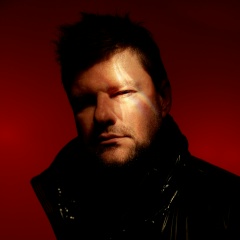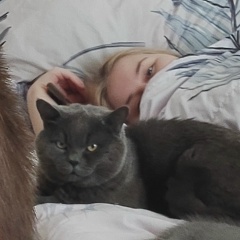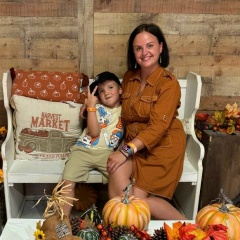Ребенок моей коллеги учится в начальной школе. Прикрепленная фотография – это страница из учебника, по которому его обучают предмету под названием окружающий мир. Несмотря на то, что я долго пыталась понять, о чем этот предмет, его суть я так и не постигла. Говорят, не испытывают энтузиазма в отношении этого предмета и школьники. Подразумевается, что окружающий мир - это замена природоведению. Однако по факту в предмете сочетаются обрывки и естественных, и социальных наук. Говоря проще, предмет позиционируют как знание обо всем, что окружает человека. Однако я думаю, многие согласятся со мной, что «обо всем» - это зачастую «ни о чем».
В методическом материале для педагогов указано, что цель курса окружающего мира в начальной школе – осмысление личного опыта и приучение детей к рациональному постижению мира. Теперь посмотрим, как обстоят дела с рациональностью в данном учебнике.
В четвертой части первого вопроса школьника спрашивают, как называли передний угол в доме. Ребенок отвечает: «красный». Сразу после этого вопроса школьнику предлагается вклеить в рамку, «обрамленную полотенцем» фотографию «самого почтенного члена семьи». А, в общем и целом этот урок называется: «В красном углу сесть – великая честь». В связи с этим у меня возникает два вопроса.
Первый: зачем выстраивать членов семьи по степени почтенности? Может быть, еще ввести строгую иерархию и армейский порядок (чтобы уж точно было ясно, кто тут почтенный, а кто не очень). На самом деле, это, конечно, совсем не смешно, потому что уважение к личности (любого пола и любого возраста), равенство супругов - это основа здоровой семьи. А на равенстве и уважении строится здоровое общество в целом. Семья – не платформа для самоутверждения.
Если бы я сейчас была семилетней девочкой, и меня попросили выполнить это задание, пришлось бы не вклеивать никого, поскольку для меня такой ход мысли является диким – выбирать, кто «почтеннее» мать или отец. С другой стороны, представьте, какой волне иронии положил начало этот учебник: наверное, ведь кого туда только не вклеивали: и кота, и губку Боба, и Ленина, и Джастина Бибера (или кого там молодежь сейчас слушает).
Второй вопрос касается следующего: в красном углу традиционно размещали иконы. Красный угол – это своего рода алтарь. Известно, что дорогих гостей в знак уважения действительно сажали в красном углу комнаты, но обратите внимание: в учебнике предлагается вклеить фото в рамку (!), при том что задание следует сразу же после вопроса про красный угол. Самый «почтенный» член семьи как идол? А его фото – нечто вроде иконы? Отделаться от этой ассоциативной связи просто невозможно.
У меня в друзьях много педагогов. Уважаемые учителя, если можете, расскажите мне, пожалуйста, о своей точке зрения на происходящее. Проблема только в учебнике, или в самом предмете?
Другой вопрос к верующим людям или тем, кто интересуется религией: считаете ли вы уместным и адекватным такое задание?
#школа #дети
В методическом материале для педагогов указано, что цель курса окружающего мира в начальной школе – осмысление личного опыта и приучение детей к рациональному постижению мира. Теперь посмотрим, как обстоят дела с рациональностью в данном учебнике.
В четвертой части первого вопроса школьника спрашивают, как называли передний угол в доме. Ребенок отвечает: «красный». Сразу после этого вопроса школьнику предлагается вклеить в рамку, «обрамленную полотенцем» фотографию «самого почтенного члена семьи». А, в общем и целом этот урок называется: «В красном углу сесть – великая честь». В связи с этим у меня возникает два вопроса.
Первый: зачем выстраивать членов семьи по степени почтенности? Может быть, еще ввести строгую иерархию и армейский порядок (чтобы уж точно было ясно, кто тут почтенный, а кто не очень). На самом деле, это, конечно, совсем не смешно, потому что уважение к личности (любого пола и любого возраста), равенство супругов - это основа здоровой семьи. А на равенстве и уважении строится здоровое общество в целом. Семья – не платформа для самоутверждения.
Если бы я сейчас была семилетней девочкой, и меня попросили выполнить это задание, пришлось бы не вклеивать никого, поскольку для меня такой ход мысли является диким – выбирать, кто «почтеннее» мать или отец. С другой стороны, представьте, какой волне иронии положил начало этот учебник: наверное, ведь кого туда только не вклеивали: и кота, и губку Боба, и Ленина, и Джастина Бибера (или кого там молодежь сейчас слушает).
Второй вопрос касается следующего: в красном углу традиционно размещали иконы. Красный угол – это своего рода алтарь. Известно, что дорогих гостей в знак уважения действительно сажали в красном углу комнаты, но обратите внимание: в учебнике предлагается вклеить фото в рамку (!), при том что задание следует сразу же после вопроса про красный угол. Самый «почтенный» член семьи как идол? А его фото – нечто вроде иконы? Отделаться от этой ассоциативной связи просто невозможно.
У меня в друзьях много педагогов. Уважаемые учителя, если можете, расскажите мне, пожалуйста, о своей точке зрения на происходящее. Проблема только в учебнике, или в самом предмете?
Другой вопрос к верующим людям или тем, кто интересуется религией: считаете ли вы уместным и адекватным такое задание?
#школа #дети
My colleague's child is in elementary school. The attached photo is a page from a textbook that teaches him a subject called the world around him. Despite the fact that I have long tried to understand what this subject is about, I have not grasped its essence. They say that schoolchildren are not enthusiastic about this subject either. It is understood that the world around is a substitute for environmental studies. However, in fact, the subject combines scraps of both natural and social sciences. Simply put, an object is positioned as knowledge of everything that surrounds a person. However, I think many will agree with me that "about everything" is often "about nothing."
In the methodological material for teachers it is indicated that the purpose of the course of the surrounding world in primary school is to comprehend personal experience and accustom children to a rational comprehension of the world. Now let's see how things stand with rationality in this tutorial.
In the fourth part of the first question, the student is asked what the front corner was called in the house. The child answers: "red." Immediately after this question, the student is asked to paste a photograph of “the most respectable member of the family” into a frame “framed with a towel”. And, in general, this lesson is called: "Sitting in the red corner is a great honor." In this regard, I have two questions.
First, why rank family members according to the degree of honor? Perhaps, we should also introduce a strict hierarchy and army order (so that it would be clear who is respectable and who is not very good). In fact, this, of course, is not at all funny, because respect for the individual (of any gender and any age), equality of spouses is the basis of a healthy family. And on the basis of equality and respect, a healthy society as a whole is built. The family is not a platform for self-affirmation.
If I were now a seven-year-old girl, and I was asked to complete this task, I would not have to glue anyone in, because for me such a train of thought is wild - to choose who is more "respectable" mother or father. On the other hand, imagine what a wave of irony this textbook initiated: probably, after all, whoever was not pasted there: the cat, and Bob's sponge, and Lenin, and Justin Bieber (or who the young people are now listening to).
The second question concerns the following: icons were traditionally placed in the red corner. The red corner is a kind of altar. It is known that dear guests were indeed seated in the red corner of the room as a sign of respect, but note: the textbook suggests pasting a photo into a frame (!), While the task follows immediately after the question about the red corner. The most “respectable” family member as an idol? And his photo is something like an icon? It is simply impossible to get rid of this associative connection.
I have a lot of teachers as friends. Dear teachers, if you can, please tell me about your point of view on what is happening. Is the problem only in the textbook, or in the subject itself?
Another question for believers or those who are interested in religion: do you consider this task appropriate and adequate?
#school #children
In the methodological material for teachers it is indicated that the purpose of the course of the surrounding world in primary school is to comprehend personal experience and accustom children to a rational comprehension of the world. Now let's see how things stand with rationality in this tutorial.
In the fourth part of the first question, the student is asked what the front corner was called in the house. The child answers: "red." Immediately after this question, the student is asked to paste a photograph of “the most respectable member of the family” into a frame “framed with a towel”. And, in general, this lesson is called: "Sitting in the red corner is a great honor." In this regard, I have two questions.
First, why rank family members according to the degree of honor? Perhaps, we should also introduce a strict hierarchy and army order (so that it would be clear who is respectable and who is not very good). In fact, this, of course, is not at all funny, because respect for the individual (of any gender and any age), equality of spouses is the basis of a healthy family. And on the basis of equality and respect, a healthy society as a whole is built. The family is not a platform for self-affirmation.
If I were now a seven-year-old girl, and I was asked to complete this task, I would not have to glue anyone in, because for me such a train of thought is wild - to choose who is more "respectable" mother or father. On the other hand, imagine what a wave of irony this textbook initiated: probably, after all, whoever was not pasted there: the cat, and Bob's sponge, and Lenin, and Justin Bieber (or who the young people are now listening to).
The second question concerns the following: icons were traditionally placed in the red corner. The red corner is a kind of altar. It is known that dear guests were indeed seated in the red corner of the room as a sign of respect, but note: the textbook suggests pasting a photo into a frame (!), While the task follows immediately after the question about the red corner. The most “respectable” family member as an idol? And his photo is something like an icon? It is simply impossible to get rid of this associative connection.
I have a lot of teachers as friends. Dear teachers, if you can, please tell me about your point of view on what is happening. Is the problem only in the textbook, or in the subject itself?
Another question for believers or those who are interested in religion: do you consider this task appropriate and adequate?
#school #children

У записи 38 лайков,
4 репостов,
3752 просмотров.
4 репостов,
3752 просмотров.
Эту запись оставил(а) на своей стене Дарья Варновская

























































